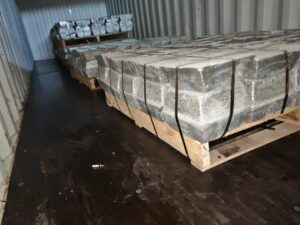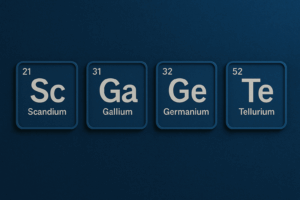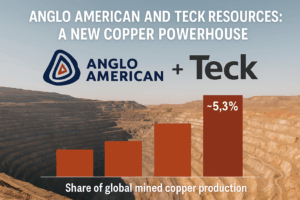As the United States accelerates its transition toward renewable energy, the nation faces a paradox. Clean energy technologies—those heralded as the backbone of a low-carbon future—are heavily dependent on critical minerals such as lithium, cobalt, nickel, and rare earth elements. Yet, most of these resources are sourced from overseas, leaving the U.S. vulnerable to geopolitical risks, price shocks, and supply chain disruption.
Amid growing concerns over energy security, researchers and policymakers are turning their attention to an unlikely source: mining waste. Tailings and rock piles left behind from decades of mineral extraction may hold the key to building a more sustainable and independent clean energy supply chain.
The Supply Chain Bottleneck
The demand for renewable energy resources has surged as solar power, wind energy, and electric vehicles experience rapid market adoption. But the path to scaling up these industries is being strained by a fragile global supply chain.
- The U.S. relies on imports for more than 80% of key minerals, including rare earth elements primarily processed in China.
- New mining ventures on American soil face years—sometimes decades—of permitting, regulatory hurdles, and local opposition.
- Geopolitical risks, from trade disputes to resource nationalism, increase uncertainty in mineral markets.
In short, America’s clean energy ambitions are being held hostage by its mineral vulnerabilities. This raises a fundamental question: Can the country meet its decarbonization goals without solving its mineral dependence?
The Case for Mining Waste
Mining waste is often seen as an environmental liability. Across the U.S., legacy mining districts are dotted with massive piles of tailings and discarded rock—byproducts of past operations that prioritized extracting only the most accessible and profitable resources.
Advances in extraction technologies, including bioleaching, chemical refining, and precision sorting, are now making it possible to revisit these old sites. According to geologists, many of these waste streams contain significant concentrations of valuable rare earths and critical minerals that were once unprofitable to recover.
By reframing waste as a resource, the U.S. could not only strengthen its clean energy supply chain but also transform a long-standing environmental liability into a strategic advantage.
Why Waste Recovery Matters
1. Reducing Dependence on Imports
For critical minerals like cobalt and lithium, global supply is concentrated in a small number of countries. This creates choke points in production and refining capacity. By tapping into domestic waste sources, the U.S. could diversify supply and lower exposure to international risks.
2. Speeding Resource Availability
Opening a new mine is a highly contentious process. From land-use battles to lengthy permitting timelines, resource development remains politically and socially fraught. In contrast, reprocessing existing mine waste avoids many of these barriers, since the material is already above-ground and accessible.
3. Building Local Economies
Communities once central to U.S. mining could see economic revitalization. Processing waste piles into market-ready mineral inputs could create new jobs, spur investment in rural areas, and give towns still burdened by abandoned mines a new lease on life.
4. Environmental Rehabilitation
Mining waste has long posed threats to ecosystems and water supplies. Recovering valuable materials also allows for enhanced reclamation and cleanup. This dual benefit—economic recovery and environmental stewardship—adds to the appeal of sustainable mining solutions.
5. Advancing Circular Economy Goals
Incorporating waste reprocessing into the mineral supply chain aligns with circular economy principles. Instead of extracting ever more raw material, waste reclamation emphasizes reuse, recycling, and resource efficiency—critical for achieving a sustainable industrial future.
Technology Driving Change
At the heart of this opportunity are breakthroughs in mineral recovery techniques:
- Hydrometallurgical processing: Using water-based chemistry to recover metals with lower environmental impact compared to traditional smelting.
- Biomining and bioleaching: Employing naturally occurring microbes to extract minerals that were previously unreachable or uneconomic.
- Sensor-based sorting: Precision scanners that identify and separate mineral-rich materials from low-value waste with unprecedented accuracy.
- Closed-loop recovery systems: Integrating recycling technologies that minimize water and chemical input, while maximizing yield.
These tools are redefining the economics of mining waste. What was once dismissed as too costly or complex is increasingly proving commercially feasible.
Barriers and Challenges
While promising, the path to large-scale waste reprocessing is not without challenges.
- Regulation: Waste piles are subject to a complex web of ownership rights, environmental laws, and land-use rules that can slow projects.
- Economics: Profitability depends on mineral prices, processing costs, and access to downstream markets. Not all waste deposits will offer commercially viable returns.
- Technological Readiness: Many emerging extraction methods are still in pilot stages and may need significant scaling before achieving market competitiveness.
- Community Buy-in: While waste recovery offers environmental benefits, local skepticism toward mining remains high in many parts of the country.
These hurdles mean that while waste recovery shows real potential, it is unlikely to serve as a sole solution. Instead, it should be viewed as one pillar in a broader strategy for U.S. energy independence.
Policy Considerations
Federal and state governments are beginning to recognize the opportunity. The Department of Energy and the U.S. Geological Survey have both funded research into mine waste recovery as part of a broader effort to strengthen the nation’s critical minerals strategy.
Policymakers are also exploring incentives:
- Tax credits for companies that invest in mineral recovery from legacy sites.
- Grant programs to advance new processing technologies.
- Streamlined permitting pathways for re-mining activities with demonstrable environmental benefits.
Such initiatives could reduce investment risk and accelerate the build-out of a sustainable domestic supply chain.
Long-Term Implications
If America embraces mine waste recovery at scale, the implications could be profound. Not only could the U.S. dramatically reduce its reliance on foreign suppliers, but it could also set a global precedent for sustainable resource management. The combination of cleaner technologies, environmental reclamation, and circular economy strategies could make U.S. resource development more competitive internationally.
Industries from EV manufacturing to renewable power projects would benefit from greater resource certainty. And by turning a liability into an asset, America would underline the notion that innovation, rather than extraction alone, can be the cornerstone of energy security.
Conclusion
As demand for renewable energy technologies accelerates, so too does the imperative to secure the minerals that power them. Traditional mining cannot keep pace with demand without triggering environmental and social backlash. Mining waste, long ignored as a byproduct of the past, may hold the key to America’s clean energy supply chain resilience.
By reimagining waste as a strategic resource, the U.S. has an opportunity to strengthen its path toward renewable energy independence, create economic value in struggling communities, and redefine the role of sustainable mining solutions in a green economy. What was once cast aside may, in fact, become the cornerstone of the next energy revolution





